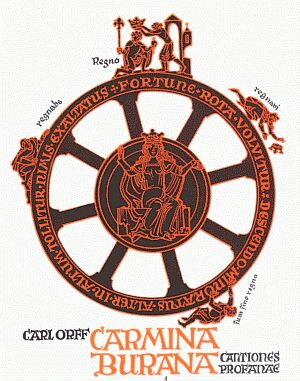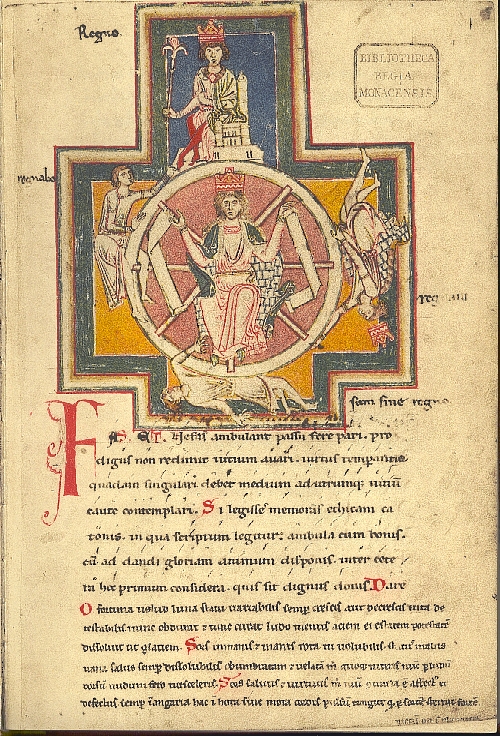Hey! Have You Heard This Song? If Not, You Should! Part 4: The Classical Edition.

At the risk of coming across as pretentious I'll only offer up one piece of music; Carl Orff's Carmina Burana. A well know and famous piece and equally beautiful. A very powerful and dramatic piece of music. Enjoy!
Carmina Burana is a scenic cantata composed by Carl Orff between 1935 and 1936. It is based on 24 of the poems found in the medieval collection Carmina Burana. Its full Latin title is Carmina Burana: Cantiones profanae cantoribus et choris cantandae comitantibus instrumentis atque imaginibus magicis ("Songs of Beuern: Secular songs for singers and choruses to be sung together with instruments and magic images.") Carmina Burana is part of Trionfi, the musical triptych that also includes the cantata Catulli Carmina and Trionfo di Afrodite. The best-known movement is "Fortuna Imperatrix Mundi (O Fortuna)" that opens and closes the piece.

UC Davis University Chorus, Alumni Chorus, Symphony Orchestra, and the Pacific Boychoir perform Carl Orff's "Carmina Burana," at the Mondavi Center on the campus of UC Davis. Jeffrey Thomas, conducting, Shawnette Sulker, soprano, Gerald Thomas Gray, tenor, and Malcolm MacKenzie, baritone. Series: Mondavi Center Presents.

Carmina Burana is structured into five major sections, containing 25 movements total. Orff indicates attacca markings between all the movements within each scene.
Fortuna Imperatrix Mundi
i: O Fortuna
ii: Fortune plango vulnera
I – Primo vere ("In Spring")
iii: Veris leta facies
iv: Omnia sol temperat
v: Ecce gratum
Uf dem Anger ("In the Meadow", "On the Lawn")
vi: Tanz ("Dance"–instrumental)
vii: Floret Silva
viii: Chramer, gip die varwe mir
ix:
a) Reie ("round dance"–instrumental)
b) Swaz hie gat umbe
c) Chume, chum, geselle min
d) Swaz hie gat umbe (reprise)
x: Were diu werlt alle min
II – In Taberna ("In the Tavern")
xi: Estuans interius
xii: Olim lacus colueram
xiii: Ego sum abbas
xiv: In taberna quando sumus
III – Cour d'amours ("Court of Love")
xv: Amor volat undique
xvi: Dies, nox et omnia
xvii: Stetit puella
xviii: Circa mea pectora
xix: Si puer cum puellula
xx: Veni, veni, venias
xxi: In trutina
xxii: Tempus est iocundum
xxiii: Dulcissime
Blanziflor et Helena ("Blanchefleur and Helen")
xxiv: Ave formosissima
Fortuna Imperatrix Mundi ("Fortune, Empress of the World")
xxv: O Fortuna (reprise)
Much of the compositional structure is based on the idea of the turning Fortuna Wheel. The drawing of the wheel found on the first page of the Burana Codex includes four phrases around the outside of the wheel:
"Regnabo (I shall reign), Regno (I reign/I am reigning), Regnavi (I have reigned), Sum sine regno (I am without a kingdom)".
Within each scene, and sometimes within a single movement, the wheel of fortune turns, joy turning to bitterness, and hope turning to grief. O Fortuna, the first poem in the Schmeller edition, completes this circle, forming a compositional frame for the work through being both the opening and closing movements.

|
0
|

|
|
0
|

|
|
|
DCF
3/30/2010
DISCLAIMER: This posting was submitted by a user of the site not from Earth's Mightiest editorial staff. All users have acknowledged and agreed that the submission of their content is in compliance with our Terms of Use. For removal of copyrighted material, please contact us HERE.